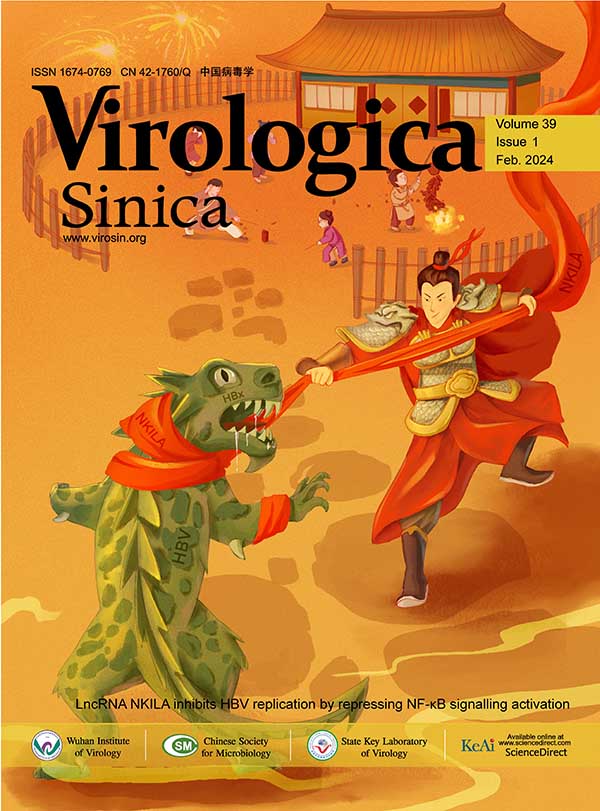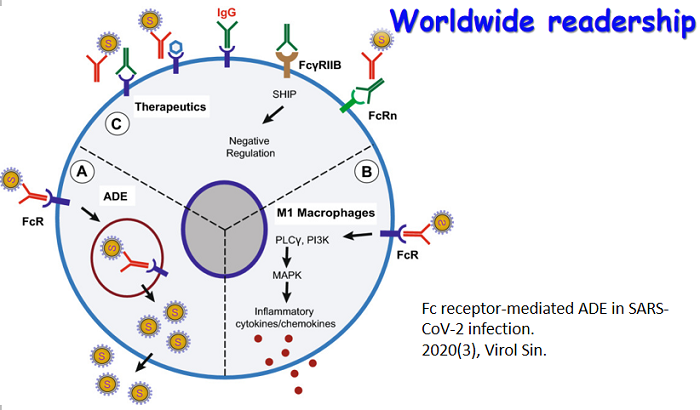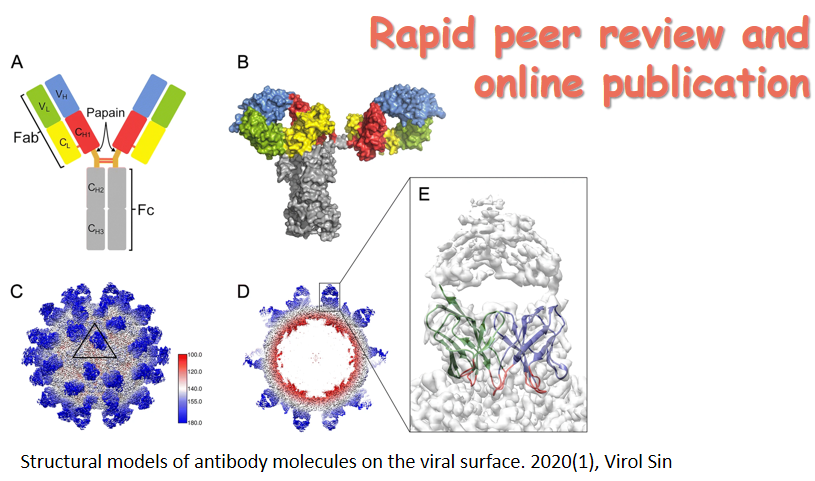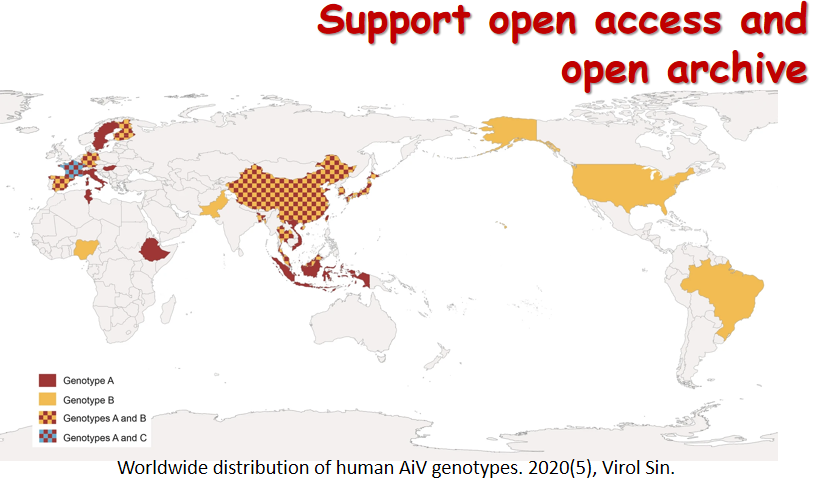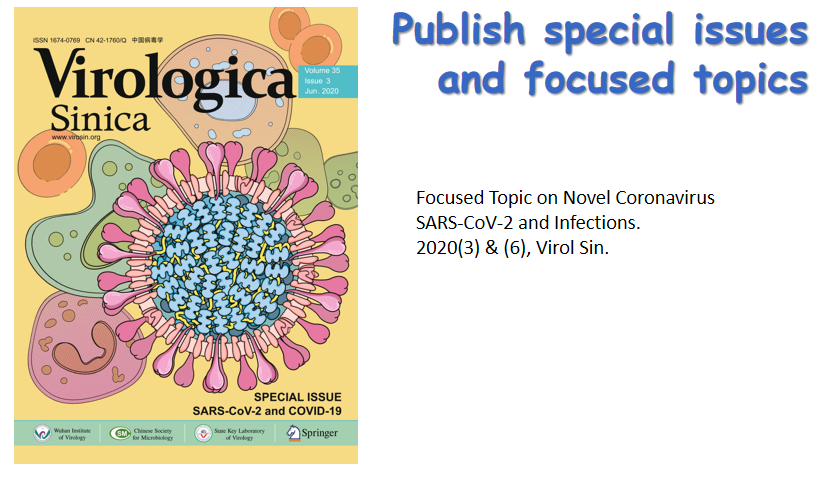|
Partial overlapping primers were designed based on the severe acute respiratory syndrome coronavirus (SARS-CoV) sars7a gene and were chemically synthesized. The sars7a gene fragment was obtained by two-round of PCR and this fragment was used as template for a further round of PCR by using a pair of primers to introduce Kozak sequence and to delete the stop codon. The mammalian cell expression vector for Sars7a and enhanced green fluorescent protein (EGFP) fusion protein was generated by inserting the PCR product into pEGFP-N1 vector, with sars7a gene upstream to EGFP gene. K562 cells were transfected by the expression vector and the green fluorescence of EGFP could be detected with flow cytometry and confocal microscopy, indicating the expression of Sars7a-EGFP fusion protein. This fusion protein was distributed in the whole cells, which suggested that Sars7a was probable a cytosolic protein rather than a membrane protein. Besides, the expression of Sars7a had no significant effect on the apoptotic cell death of K562 cells.
The purpose of this study is to establish a new method which HCV RNA can be used to detect sensitively and specifically through efficient single strand RNAs(ssRNAs) amplification. The sera from the chronic Hepatitis C patients were used as specimens. Single step reverse transcription-PCR (SRT-PCR) was performed prospectively, with a designed set of primers which defined the sequence unique to the 5’ noncoding region of the HCV genome, a great deal of specific ssRNAs were synthesized in the presence of T7RNA polymerase and other appropriate conditions within five hours. Comparing with the nested-PCR, the quantity of the products in our method was nearly 20-fold higher and its specificity was verified by the electrophoresis on agarose gel and the dot hybridization with the probe.
In this paper, based on the especial interaction among purificated Dengue 2 virus, monoclon- al antibody against Dengue virus, virus receptor, and Protein-G-Agrose; one non-glyprotein, which molecular weigt is approximately 35kDa, has been identified to be the receptor of Dengue 2 virus on the C6/36 cells by the method of immunological co-sedimentation. The glyprotein nature of this receptor is also denied through glyprotein stain procedure.
The HPV E7 variant shares the same coding sequence with the wild type E7 except that the 43rd cordon was mutated from CAA to TAA. The recombined plasmid pcDNA3.1-(by) E7 DNA and pcDNA3.1-(ys)- E7 DNA, were constructed by molecular clone technology, and then injected into mice intradermally respectively. The serum and the spleen lymphocyte suspension of the mice were isolated respectively at different time. The specific antibody was detected by ELISA and the lymphocyte proliferative response was detected by MTT method. After gene immune, the result of ELISA showed both the HPV16 (ys) E7 and HPV16 (by) E7 could induce specific antibody. The result of MTT method showed in comparison to HPV16 (ys) E7, no specific lymphoproliferation after E7 protein restimulation in vitro was detected in HPV16 (by) E7 group. The results suggested that the variant E7 protein could induce host humoral immune response, but could not elicit special cellular-immune to it, which indicated that HPV16 E7 variant was different from wild type HPV16 E7 in both structure and immunuogenicity, perhaps resulting in escaping the nature infection and the response induced by vaccines, leading to persistent infection. Furthermore, this experiment offered reference for other studies on virus variant which can’t be cultivated in vitro.
In order to study the immune responses of Hantaan virus envelope glycoproteins G1 and G2 in adenovirus expression system, G1 and G2 gene were amplified from Hantaan virus 76-118 and cloned to the plasmid pAdTrackCMV. Positive clones pAdTrackCMV-G1 and G2 were determined with restriction enzyme digestion. The recombinant adenovirus rAdeasy-G1 and rAdeasy-G2 were generated by bacterial homologous recombination with adenoviral plasmid pAdeasy-1 in E.coli BJ5183. After amplification in the 293 cell, the recombinant viruses were immuned to the Balb/c mice. The antibody reaction were detected by ELISA and Immunofluorescence Assay. Six rAdeasy-G1 immuned mice and four rAdeasy-G2 immuned mice produce antibody which can specifically react with the Hantaan virus. These results suggested a possible application of adenovir- us expression system.
vp2-4-3 gene of very virulent infectious bursal disease virus strain SH95 (vvIBDV) was double enzyme digested and cloned into eukaryotic expression vector pALTER-MAX by cohesive ends. The recombinant plasmid was identified by enzyme-digestion, which showed that the gese was cloned into pALTER-MAX vector with right orientation and in the downstream of CMV promoter. To express this recombinant eukaryotic expression plasmid, Vero cells were transfected with the plasmids mediated by LipofectamineTM 2000 and specific proteins was detected in the cells by immuno- fluorescent assay of anti-IBDV antibody. 2-day-old chickens were intramuscularly injected with the plasmid pALTER-MAX-VP2-4-3, thigh muscles were collected at 1 week after injection. Protein expression was detected by immuno-fluorescent assay with antibody to IBDV. Expression of plasmid pALTER-MAX-V P2-4-3 in chorioallantoic membrane(CAM)of 11-day-old chicken embryo was detected by Dot-ELISA with antibody to IBDV.
The RNA S7 encoding serogroup-specific antigen VP7 of bluetongue virus (BTV) was cloned and inserted into pBAD/Thio TOPO vector. The recombinant plasmid was identified by restriction analysis, PCR and sequence. The results of SDS-PAGE and Western immunoblotting revealed that the VP7 was expressed in E coli LGM194 in a high level and the recombinant fusion protein with a molecular mass of approximately 54.5 kDa. Competition enzyme-linked immunosorbent assay (c-ELISA) indicated that the expressed BTV VP7 was similar in antigenicity to that of the native virus as revealed by its reactivity with monoclonal antibody (MAb) specific to BTV. The availability of a reliable BTV recombinant VP7 could enhance our existing assay for detection of BTV-specific antibodies. The performance of the c-ELISA and agar gel immunodiffusion (AGID) were compared using 3657 animal field sera from herds in China and animal imported. The purified recombinant VP7 antigen is highly immunogenic and has been shown in a c-ELISA to be reactive with antisera of 24 BTV serotypes (1 to 24). No cross-reactivities were detected between BTV and EHDV in c-ELISA tests. The data indicated that VP7 is a highly conserved protein amongst BTV serotypes. The c-ELISA tests indicate that the recombinant VP7 is useful as a diagnostic reagent for serological tests of BTV.
To establish an effective, economical and simple technology for preparing rabies viral antigen that can be used to produce horse anti-rabies serum, rabies virus strain was inoculated in vero cells cultured with medium containing 10% horse serum and was propagated with 199 culture medium containing 1%~3% horse serum. Virus were harvested at the fifth and eighth days and used for preparing antigens by concentration, inactivation and centrifugation. The titers of rabies virus in the culture were reached above 7.0 logLD50/mL .The potency of antigens were higher than 6.0 IU/mL. The antigen is suitable immunising horse for producing rabies immunoglobulin.
Four field strains of Infections bursal disease viruses (IBDV) isolated in China during 1997~1999 were compared for their pathogenity and sequences in high variable (hv) region of vp2 genes. It was indicated that GX8/99 was a very virulent IBDV strain (vvIBDV), pathogenicity of other 3 strains was not as the typical vvIBDV but much higher than classical or standard virulent IBDV strains. The hv regions of vp2 of the 4 strains have very high homology with vvIBDV reference strain HK46, 96.8%~99.5% at DNA level and 96.6%~100% at amino acid (aa) level. But their homology with vaccine strain D78 was very low, as only 91.7%~93.6% or 91.8%~93.2% at DNA level or aa level, respectively. It seems like that there was some relationship between the sequences of hv region and pathogenicity. Relatively, the new vvIBDV strain GX8/99 had less homology of 96.8%~97.2% at DNA or aa level to vvIBDV reference strain HK46 and other 3 field strains, than the homology among HK46 and other 3 strains, which were more than 98.4% or 98.6% at DNA or aa level. There was a 100% homology of aa sequence among SD3/98、JS30/99 and HK46. It was demonstrated that the new vvIBDV strains GX8/99 had changed in both pathogenicity and hv region of vp2 gene relative to reference strain HK46 and other field strains.
The recombinant plasmid pETN was transformed into E.coli BL21 (DE3) host cell and the expression product-recombinant nucleocapsid protein of PRRSV was obtained under the optimized condition of host cell cultivation and IPTG induction. Consequently, the expression product was purified by means of his-binding resin protein purification procedure. SDS-PAGE and Western-blot were used to detect the purification effect and the specificity of purified recombinant nucleocapsid protein of PRSSV. The purified N protein was used to coat 96-well plate, each step was optimized, such as coating concentration of recombinant nucleocapsid protein, scample dilutim, chromogen (TMB) and stop solution as well as concentration. As a result, an indirect ELISA was established to detect antibody against PRRSV. About 200 serum samples were detected by the method and IDEXX ELISA kit, respectively. The agreement ratio between the two method reached at 91%.
The long terminal repeat (LTR) of Reticuendotheliosis virus (REV) was amplified by PCR technique and cloned into pUC18 vector at the sites of EcoRI and SacI, and the BGH polyadenylation signal sequence was cloned at the sites of Sph I and Hind Ⅲ as a terminor. The positive clone was named pUC-LTR, which was used as a basic expressing vector to validate the activity of LTR. Green fluorescent protein (GFP) and REV envelope glycoprotein 90 (gp90) gene was cloned at the downstream of LTR in the pUC-LTR vector respectively as a reporter. These two recombinants pUC-LTR-GFP and pUC-LTR-gp90 were then transfected into Chicken Embryo Fibroblast (CEF) cells. 48h after the transfection, we could detect the expression of GFP and gp90. This study shows the LTR sequence could be used as a promoter to construct expressing vectors.
In this study, the DNA polymerase genes of 9 different pathotypes strains were compared, to analyze the relationship between the pathotype and MDV’s DNA polymerase gene. These strains included four international reference strains—vaccine strain CVI988, virulent strain GA, very virulent strain Md5 and very virulent plus strain 648A; and other vaccine strain 814, reference strain Jing-1 and three field strains isolated in China. The results showed that the DNA polymerase gene was highly conserved. The homology of upstream regulating sequences among 9 different strains was 96.7%~100%. The identity of amino acid sequences of DNA polymerase among 9 MDV strains of different pathotypes was 99.2%~100%. Although there are variations among them, there are no direct relationship between the DNA polymerase gene and pathotype or zone distribution.
The nucleotide sequences of six strains named T1, T2, T3, T4, T5 and T6 of FMDV type O were determined. RNA of the six cell-adapted virus strains were extracted by single-step method of RNA isolation, reverse-transcripted and amplified by PCR, respectively. PCR products were cloned and sequenced. The homology among these T1-T6 strains is 95%~99.8% for nucleotide sequence and 94.8~100% for amino acid sequences. Homology among the T1,T2,T3,T4,T5,T6, O/HKN/14/82、O/TAW/81/97、O/PHI/7/96、O/HKN/1/99 and O/HKN/16/96 strains are 86.1%~95.8%.The relative degree of variation of VP1 140-160 and 200~213 amino acids, the major neutralizing site determined, were same within the T1, T2, T3, T4, T5 and T6 strains, indicating the similarity in epitopes and antigenicity. The nuleotide sequences of six virus strains belong to the same genetype-Cathay topotype.
In the study, we designed an antisense RNA targeting at the highly conserved sequence (26880-27184nt)of Transmissible gastroenteritis virus of swine,(TGEV). The fragment cloned by PCR was recombined with retrovirus expression vector, pLXSN, and transfected into packaging cell line PA317 with Lipofectamine. The viral supenatants of the clones selected with G418 (500 g/mL) were detected by murine fibroblast NIH3T3. The highest viral titer pseudovirus was used to infect IBRS2 cell. PCR and RT-PCR analysis indicated that the pLXSN-N5’ had inserted into the genome of IBRS2 cell. The examination of cytopathic effect (CPE) showed that the antisense RNA could inhibit TGEV replication effectively.
Mx protein is one of the classes of antiviral proteins induced by type I interferons (IFN). A full-length cDNA of mandarinfish (Siniperca chuatsi) Mx gene was obtained using reverse transcription polymerase chain reaction (RT-PCR) and RACE (rapid amplification of cDNA ends) polymerase chain reaction (PCR) amplification of total RNA extracted from liver of a mandarinfish which was infected with Infectious spleen and kidney necrosis virus (ISKNV) (GenBank accession No.AY392097). The result of sequence analysis indicates that the 2.4kb mandarinfish Mx cDNA contains an open reading frame (ORF) of 1881nt encoding a 627 amino acid protein whose deduced protein molecular weight is 71.5kDa. The alignment of the deduced mandarinfish Mx protein amino acid sequence with that of other species shows that the Mx protein of mandarinfish contains a triparitite guanosine-5’-triphosphate (GTP)-binding motif (GXXXSGKS/T, DXXG, T/NKXD), a signature of the dynamin family (LPRGS/ KGIVTR), and a highly conserved leucine zipper motif in the C-terminal region of the protein, which are conserved in all IFN-induced Mx proteins of vertebrates.
The conotoxinlike (ctl) gene is a small gene in the genomes of several baculoviruses. The biological function of baculoviral ctl gene remains unknown. In this report, we generated a recombinant AcMNPV(AcBac-ph-ctl) which contains the ctl gene from BusuNPV using AcMNPV bacmid system. The transcription of ctl gene by AcBac-ph-ctl was confirmed by RT-PCR in infected Sf21 cells. To study the CTL function in vivo, the recombinant viruses were used to infect Spodotera exigua peros, and the infectivity and action speed were determined. No significant difference between the median lethal concentration (LC50) and the median survival time (ST50) of the wild type virus AcMNPV and the recombinant virus was found .
The coat protein (CP) gene of the Beijing isolate of Wisteria vein mosaic virus (WVMV-BJ) was amplified by RT-PCR, and ligated to the expression vector pET22b(+). The recombinant plasmid pET-WVMVCP was transformed into E. coli BL21(DE3) and then induced by IPTG. It was shon that the CP gene was highly expressed by SDS-PAGE and Western blot analysis. The molecular weight of the recombinant protein was about 34.4kDa. Antiserum with high specificity was produced after the rabbit was immunized with purified recombinant protein, and the titer was determined to be 1/1024 by micro-precipitation, or 1/8192 by antigen coating plate- ELISA(ACP-ELISA).
The purpose of the present study was to determine the prevalence of swine Hepatitis E virus (HEV) infection in Xinjiang. 813 swine serum samples collected from 1 to 12 months of age at 9 swine farms in Xinjiang region were tested by ELISA for the presence of IgG antibodies against HEV. The recombinant protein pUS166 containing region 452-617aa of the ORF2 of HEV US strain was used as coating antigen. The result showed that anti –HEV IgG were detected in 265 of 405 pigs (65.43%) in one group and 238 of 408 pigs (58.33%) in another group , and that the seropositivity rate was not related to geographic district and breeds, but differed remarkably by age, being 40% among the 1- to 3-month-old piglets, but 77.33% among ones over 3-month-old. It suggested that swine HEV was widespread in different geographic regions of XinJiang.







